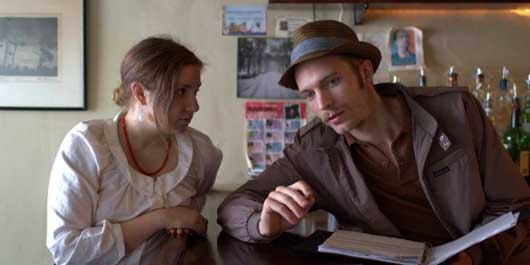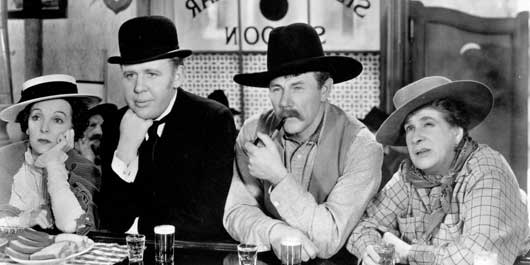
The Artist quickly sprang from being a niche arthouse movie to a worldwide box office success, with a bunch of BAFTAs and Oscars, including Best Picture. But is The Artist really worthy of all the noise? It might just be.
Upon its initial release it was reported that people were walking out of the cinema on the grounds that they did not realise it was a silent film. Now for those of you who are regretting that decision and for those that didn’t get round to seeing it the first time, The Artist is available to buy on DVD and Blue Ray.
The Artist is Michel Hazanavicius’s modern silent (stay with me) masterpiece. On the surface it’s a very simple and accessible tale of love, fame, and loneliness within the film industry…but if you dig a little deeper it becomes a different beast altogether.
The Artist is set within the late 1920s, a time when the “talkies were first introduced to the film industry. It was a time when some people saw the introduction of sound as a disastrous moment within the film industry. It was feared that film would lose its essence, and select actors, directors and academics detested the idea of introducing sound to a primarily visual art form. George Valentin (Jean Dujardin)is one of these actors; the catalyst to the narrative is the introduction of sound and George’s rejection of it.
George Valentin falls into a spiral of self destruction as he is unable to accept the evolution (or destruction) of the film industry. His wife leaves him and the only true friend he seems to have is his little Jack Russell, the true hero of the movie. George meets a young and beautiful actress called Peppy Miller (Berenice Bejo), a star of the talkies. Will she be able to pull George out of his pit of desperate depression? Or will he become lost and bitter, forever reminiscing on the past?
With the recent surge of 3D in film and the introduction of 48 frames per second in Peter Jackson’s The Hobbit, are we beginning lose track of the essence of cinema? Do these expensive bells and whistles really enhance our viewing experience or is it merely a desperate attempt to keep film fresh, exciting and profitable? Much like Federico Veiroj’s A Useful Life (2011), The Artist pays homage to the early and often forgotten forms of cinema; it’s both a critique of the film industry and a gentle reminder that film is first and foremost a visual medium.
Whilst it’s going to polarise viewers due to its aesthetic and technical presentation, there is no doubt that as a final product it succeeds on every level.
Overall Verdict: The Artist subverts the notion that silent films are a thing of the past and it reintroduces the golden years of cinema for a new generation of viewers.
Reviewer: Sam Barnett





You must be logged in to post a comment.